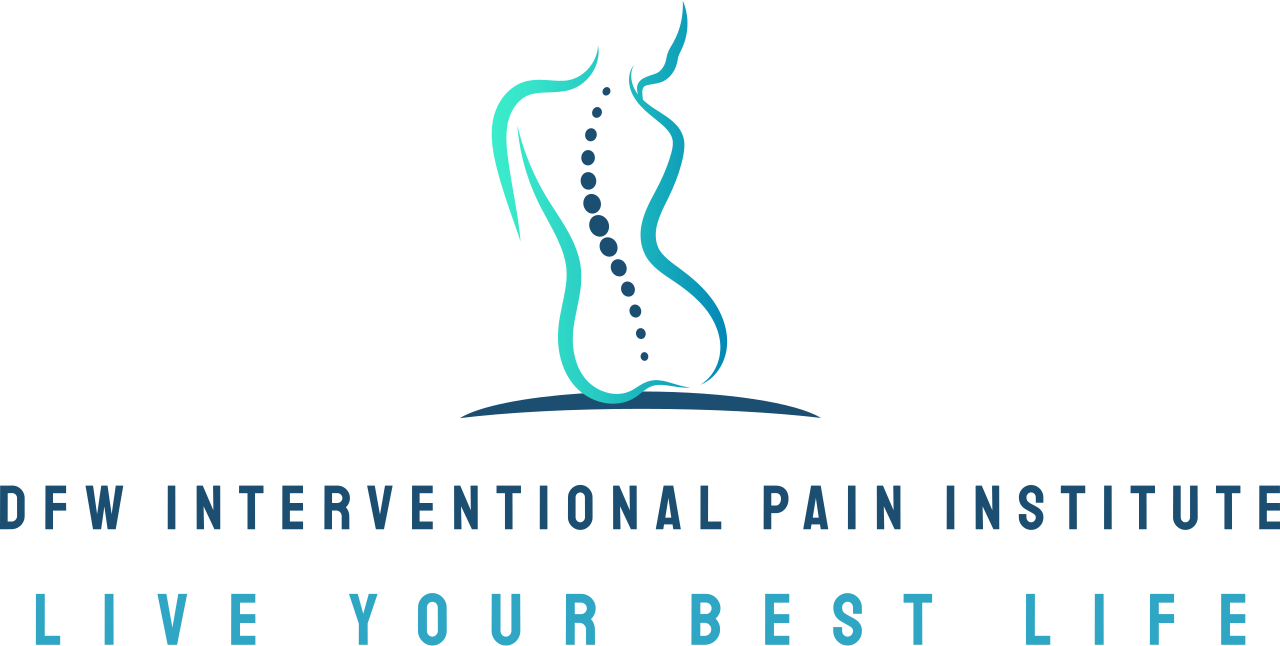Platelet-rich plasma (PRP) therapy: Your ultimate guide
In recent years, platelet-rich plasma (PRP) therapy has emerged as a cutting-edge treatment option in regenerative medicine. This innovative therapy harnesses the body’s natural healing capabilities to address a variety of conditions, ranging from sports injuries to aesthetic concerns. We use PRP therapy at DFW Interventional Pain Institute to help a number of chronic pain conditions and have seen great success with our patients. In this comprehensive guide, we will explore the fascinating world of PRP therapy, how it works and what to expect from the treatment process at DFW Interventional Pain Institute.
Understanding PRP therapy
PRP therapy involves using a component of your blood known as platelet-rich plasma. Platelets are tiny cells found in your blood that play a crucial role in wound healing and tissue regeneration. In PRP therapy, a small amount of your blood is drawn and processed to concentrate the platelets, creating a powerful serum. When injected into damaged or aging tissues, these concentrated platelets release growth factors that stimulate healing and rejuvenation.
The simplicity of PRP therapy lies in its ability to utilize your own body’s resources, which is typically known as "regenerative therapy", without the need for synthetic substances or invasive procedures. This aspect makes it an attractive option for those seeking minimally invasive treatments with a more natural approach. The therapy’s versatility allows it to be used in various medical fields, offering hope for patients struggling with chronic pain, hair loss and skin issues.
The science behind PRP therapy is rooted in its ability to enhance the body’s natural healing process. By injecting a high concentration of platelets, the localized area experiences an influx of growth factors, promoting cell regeneration and tissue repair. This process can lead to accelerated healing times, reduced inflammation, and improved overall function of the affected area.
The history and evolution of PRP therapy
PRP therapy has a rich history dating back several decades. It was first introduced in the 1970s as a revolutionary approach to enhance healing in surgeries, particularly in the field of oral and maxillofacial surgery. Over time, its applications expanded into other medical specialties, such as orthopedics and dermatology, as researchers discovered its potential in treating various conditions.
The 1990s marked a significant turning point for PRP therapy as advancements in technology allowed for more efficient processing methods. This led to the development of more refined platelet concentrates, resulting in improved therapeutic outcomes. Since then, PRP therapy has gained traction in both traditional and alternative medicine, paving the way for ongoing research and innovation.
Today, PRP therapy continues to evolve with the integration of new techniques and methodologies. Researchers are exploring novel ways to optimize platelet concentration and delivery methods, further enhancing the efficacy of the treatment. With a growing body of evidence supporting its benefits, PRP therapy is poised to become a staple in regenerative medicine for years to come.
Conditions treated with PRP therapy
PRP therapy has proven to be an effective treatment for a wide range of conditions, particularly those involving musculoskeletal injuries, arthritis, hair loss and skin rejuvenation. In pain management, PRP injections are commonly used to alleviate pain and accelerate healing in conditions such as tendonitis, ligament sprains and osteoarthritis. Many athletes and active individuals often turn to PRP therapy to recover from sports-related injuries and get back to their peak performance, but anyone can see benefits from this therapy when it comes to pain management.
In the field of dermatology, PRP therapy has gained popularity for its remarkable results in treating hair loss and promoting skin rejuvenation. For individuals experiencing thinning hair or early-stage baldness, PRP injections can stimulate hair follicles, encouraging new growth and improving hair density. Additionally, PRP facials, often referred to as the “vampire facial,” use the therapy to revitalize the skin, reducing fine lines and enhancing overall skin texture.
PRP therapy’s versatility extends beyond these applications, with emerging studies exploring its potential in treating chronic conditions such as plantar fasciitis, rotator cuff tears and even certain types of wounds. The therapy’s ability to harness the body’s natural healing mechanisms offers a promising solution for those seeking alternatives to traditional treatments.
The PRP therapy process
The process of PRP therapy begins with a simple blood draw in our office, similar to a routine blood test. Once the blood is collected, it is placed in a centrifuge—a machine that spins at high speeds—to separate the platelets from other blood components. This step allows for the concentration of platelets, creating the platelet-rich plasma used for treatment.
After processing, the platelet-rich plasma is carefully extracted and prepared for injection. The targeted area is then cleaned and numbed to ensure patient comfort. Using a fine needle, the PRP is injected into the affected tissue or area of concern. The entire procedure typically takes around 30 minutes to an hour, depending on the specific application and treatment area.
Following the injection, patients may experience mild swelling or discomfort at the injection site, which usually subsides within a few days. Recovery time varies based on the condition being treated and the individual’s response to the therapy. Many patients report noticeable improvements within weeks of the initial treatment, with continued progress over time. Dr. Edrick Lopez and our staff will work with you to figure out a treatment plan and frequency that's best for your specific treatment needs.
Safety and effectiveness of PRP therapy
One of the most appealing aspects of PRP therapy is its excellent safety profile. Since the treatment utilizes your own blood components, the risk of adverse reactions or infections is minimal. This makes PRP therapy a viable option for individuals who may be sensitive to medications or synthetic treatments.
Research studies have demonstrated the effectiveness of PRP therapy in various applications, with many patients experiencing significant improvements in pain reduction, healing and overall quality of life. However, it is important to note that individual results may vary, and the success of the treatment depends on factors such as the underlying condition, severity, and patient compliance with post-treatment care.
While PRP therapy is generally safe, like any medical procedure, it is not without potential side effects. Some patients may experience temporary discomfort, swelling or bruising at the injection site. It is crucial to discuss any concerns or pre-existing conditions with your our staff before undergoing PRP therapy to ensure the treatment is appropriate for you.
PRP therapy’s impact on regenerative medicine
PRP therapy is revolutionizing the field of regenerative medicine by offering innovative solutions to some of the most challenging medical conditions. Its ability to enhance the body’s natural healing processes has paved the way for new approaches in tissue repair, pain management and aesthetic treatments. This breakthrough therapy is providing hope for patients who may have previously exhausted conventional treatment options.
The success of PRP therapy lies in its potential to address the root cause of conditions, rather than merely alleviating symptoms. By promoting tissue regeneration and repair, PRP therapy is helping patients achieve long-lasting results and improved quality of life. Its minimally invasive nature and low risk of complications make it an attractive option for those seeking a more holistic approach to healing.
As research into PRP therapy continues to advance, it is likely that new applications and treatment protocols will emerge. The therapy’s integration into mainstream medicine signifies a paradigm shift towards more personalized and targeted healthcare solutions.
The future of PRP therapy
The future of PRP therapy looks promising, with ongoing research and clinical trials exploring its potential in various medical fields. Scientists are investigating new methods to optimize platelet concentration and delivery, as well as exploring combination therapies with other regenerative techniques. These advancements hold the potential to expand the scope of PRP therapy and enhance its effectiveness.
Emerging studies are also examining the role of PRP therapy in novel applications, such as treating neurological disorders and improving the wound/scar healing process in cancer patients. The therapy’s versatility and adaptability make it a valuable tool in the quest for more effective and individualized healthcare solutions.
With continued innovation and a growing body of evidence supporting its benefits, PRP therapy is poised to become an integral component of modern medicine. Its potential to transform the landscape of regenerative medicine is immense, offering hope for countless individuals seeking improved health and well-being.
Success stories and testimonials from our patients
Many individuals have experienced remarkable improvements in their health and well-being through PRP therapy at DFW Interventional Pain Institute. Here are a couple from our patients:
"I am very pleased with the care I received from Dr. Lopez and his staff. Appointments are quick, my injections have helped manage my pain, and Dr. Lopez is very knowledgeable! I love coming to see him, definitely recommend his practice to those looking ways to manage their pain" -Kathleen D., Google Maps
"Dr Lopez has done an Amazing job treating my brother. The platelet Rich Plasma therapy my brother has been getting has relieved him of so much hip pain!" - Lucy M., Google Maps
The promising future of PRP therapy
In conclusion, PRP therapy offers a revolutionary approach to healing and regeneration, harnessing the body’s natural capabilities to treat a variety of conditions. Its minimally invasive nature, high safety profile, and proven effectiveness make it an attractive option for individuals seeking alternatives to traditional treatments.
The future of PRP therapy is bright, with ongoing research and innovation paving the way for new applications and improved treatment protocols. As the field of regenerative medicine continues to evolve, PRP therapy is set to play a pivotal role in shaping the future of healthcare.
At DFW Interventional Pain Institute, Dr. Lopez and our staff specialize in helping patients live their best life through innovative treatment methods like PRP therapy. If you're interested in learning more about PRP therapy or considering it as a treatment option, schedule a consultation today. We can't wait to help you on the path to living your best life!

